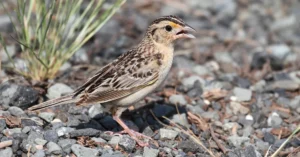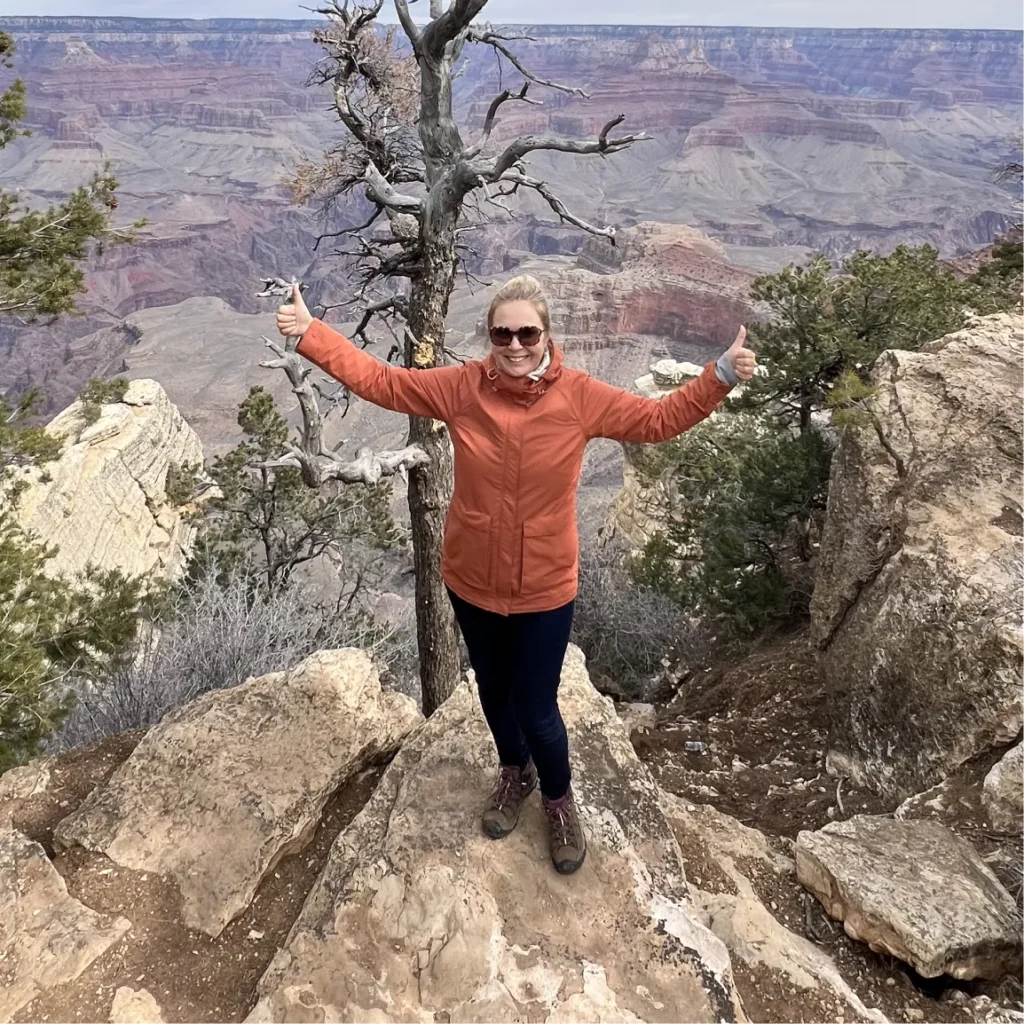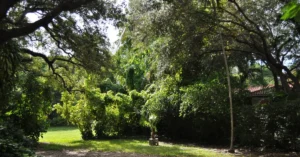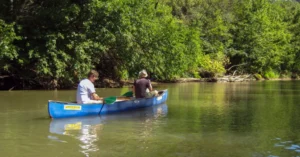The Florida panther is one of the most endangered mammals in our country. Thankfully, the efforts led by Defenders of Wildlife over the past 40 years have helped. Originally, there were less than 20 panthers left, but now we have about 120 to 230 adult panthers living in south Florida. That’s a big improvement!
However, challenges remain. As more people move to Florida, which has recently become the third most populous state, the panthers’ habitat is shrinking. In 2020 alone, nine out of ten panther deaths were caused by car accidents. It’s clear that the loss of their living space and dangers from human activities are big threats.
Defenders of Wildlife focus on three main goals to help panthers: they work to protect and increase panther habitats, make roads safer for them, and help people learn how to live alongside these majestic animals. Their work is crucial for the panthers’ survival and is a key part of the conservation efforts.
By understanding and supporting these efforts, we can ensure that the Florida panther continues to recover and thrive. Florida panthers watching sites give us a chance to see these incredible creatures while supporting their conservation.
Getting to Know the Florida Panther
The Florida panther is not just any cat—it’s a symbol of wild survival. Let’s dive deeper into who these panthers are. They look a bit like other big cats you might know, but they have some unique features. They are usually tan with long tails, and they move silently through the forests and swamps of Florida.
These panthers are shy and mostly active when it’s dark, from dusk till dawn. They prefer to stay hidden, living quietly away from people. When they hunt, they use their sharp senses and quick moves to catch smaller animals like deer, raccoons, and even alligators!
Understanding these behaviors helps us see why protecting their habitat is so important. Without enough wild space to hunt and live, it’s tough for panthers to survive. That’s why areas set aside for their protection are critical, not just for the panthers but for all the other wildlife that shares their home.
Where Florida Panthers Live
Florida panthers need a lot of space to roam, hunt, and live. Their ideal home is in the forests and swamps of southern Florida. These areas give them the wide, open spaces they need to be their wild selves.
Sadly, their space is getting smaller. As more people build homes and roads in Florida, the panthers’ territory shrinks. This not only makes it hard for them to find food but also puts them at risk of running into humans, which can be dangerous for both.
Most of the remaining Florida panthers now live in a few protected areas:
- Big Cypress National Preserve: This large area has wetlands and forests perfect for panthers.
- Florida Panther National Wildlife Refuge: Specially set up to protect panther habitat, this place is a safe haven for them.
- Everglades National Park: Known for its vast wetlands, it’s also a home for panthers.
Supporting the Florida Panthers Conservation
Conserving the Florida panther involves tackling several serious challenges. The main threats these big cats face are the loss of their natural habitats due to development and the danger of vehicle collisions. These issues make it difficult for panthers to find safe spaces to live, breed, and hunt.
Effective conservation programs have been crucial in addressing these challenges. Here are some of the key efforts that have helped stabilize panther populations:
- Crossing Structures and Safety Initiatives: One of the innovative solutions to prevent vehicle strikes are wildlife underpasses and fencing along highways. These structures guide panthers safely beneath roads, significantly reducing the likelihood of accidents.
- Land Preservation Successes: A standout achievement in panther conservation was in 2011, when nearly 650 acres of prime panther habitat were secured near the Florida Panther National Wildlife Refuge, outside Naples. This effort was made possible through a collaboration involving public agencies like the Florida Department of Environmental Protection, the Florida Fish and Wildlife Conservation Commission, the National Park Service, the U.S. Fish and Wildlife Service, and support from local landowners. This land preservation is crucial for giving panthers room to roam and is a top priority for the Florida Panther Interagency Committee.
Local wildlife reserves and national parks are pillars in the conservation strategy:
- Florida Panther National Wildlife Refuge and Big Cypress National Preserve offer vast areas of protected land that serve as sanctuaries not only for the Florida panther but for a myriad of other species that form part of the ecological community.
- Everglades National Park supports a broad ecosystem that is vital not just for panthers but for the overall biodiversity of the region, promoting a balanced environment.
Top Florida Panthers Watching Sites
Looking to spot a Florida panther? Your best bets are the Big Cypress National Preserve, Florida Panther National Wildlife Refuge, and Everglades National Park. These protected areas offer the ideal settings to possibly see these elusive cats in their natural habitat, especially during guided tours.
Big Cypress National Preserve

Big Cypress National Preserve stands out as one of the top places to potentially see a Florida panther in its natural setting. Spanning over 729,000 acres, this preserve features a rich mosaic of swampy wetlands and hardwood hammocks that provide an ideal habitat for panthers. The vast, undisturbed spaces not only support a healthy panther population but also make it a popular spot for wildlife enthusiasts and researchers aiming to observe these majestic creatures.
Unique Landscape
- Big Cypress spans over 729,000 acres, featuring a blend of wetlands and hardwood hammocks.
- The diverse terrain supports a rich array of wildlife, creating a perfect ecosystem for panthers.
Panther-Friendly Features
- Abundant prey like deer and wild hogs attract panthers.
- The preserve’s minimal human disturbance and large size allow panthers to roam freely.
- Regularly maintained trails increase your chances of sighting while keeping a safe distance.
Florida Panther National Wildlife Refuge

The Florida Panther National Wildlife Refuge is a sanctuary specifically designed to protect the Florida panther and its habitat. Located in the heart of panther country, this refuge offers designated trails where the chances of spotting these rare cats are higher, especially during certain times of the day.
Best Trails for Sightings
- Panther Trail: An easy access point with higher sighting probabilities.
- Oak Hammock Trail: Dense foliage may offer a glimpse of panthers in their natural stealth mode.
- Marsh Edge Trail: This trail offers panoramic views of habitats frequented by panthers.
Optimal Times for Visits
- Early Morning: Dawn is prime time as panthers are active following nocturnal hunts.
- Late Evening: Dusk also sees increased panther activity, as they prepare for the night.
- Seasonal Consideration: Cooler months often yield more sightings, as panthers are less reclusive.
Everglades National Park
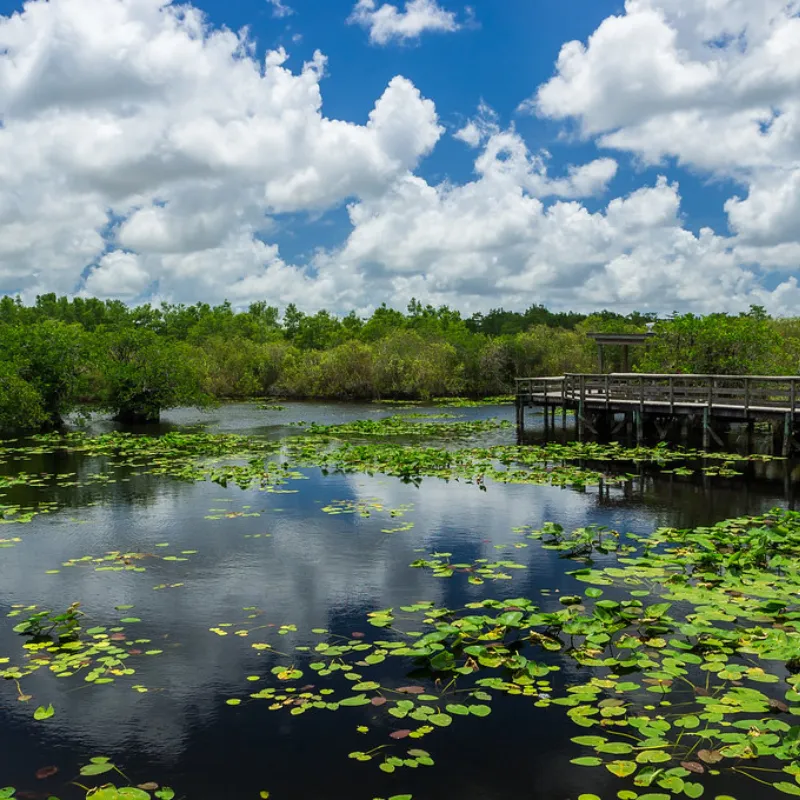
Everglades National Park offers a unique opportunity to potentially spot Florida panthers in one of the most diverse ecosystems in America. Spanning 1.5 million acres, the park’s vast landscapes provide the perfect backdrop for these elusive predators. Joining a park ranger-led tour not only increases your chances of a sighting but also ensures a safe and informative adventure into panther territory.
Benefits of Ranger-Led Tours
- Expert Guidance: Rangers provide insights into panther behaviors and habitats.
- Increased Safety: Traveling with a ranger ensures safety in remote or dense areas.
- Educational Value: Learn about conservation efforts and the ecosystem’s biodiversity.
Best Tour Practices
- Book in Advance: Tours can fill up quickly, especially during peak visiting seasons.
- Wear Appropriate Gear: Prepare for the park’s varied terrain and weather conditions.
- Stay Alert: Keep an eye out for subtle signs of wildlife activity as instructed by the ranger.
Fakahatchee Strand Preserve

Fakahatchee Strand Preserve State Park, often referred to as the “Amazon of North America,” offers a unique blend of tropical and subtropical wildlife, including the elusive Florida panther. This park is the largest state preserve in Florida and provides a vast, swampy haven that is ideal for panther habitats, making it a lesser-known but promising location for those hoping to spot these magnificent creatures.
Key Trails and Areas
- Janet’s Trail: Known for occasional panther tracks and sightings.
- Big Cypress Bend Boardwalk: Offers potential high vantage points for observing distant wildlife.
- East Main Tram: A remote path that increases chances of encountering wildlife, including panthers.
Tips for Effective Spotting
- Visit During Twilight Hours: Panthers are more active during dawn and dusk.
- Maintain Quietness: Minimize noise to increase your chances of seeing wildlife.
- Use Binoculars: Enhance your viewing range with appropriate optical gear.
- Stay on Trails: For your safety and to preserve the natural habitat of the wildlife.
Corkscrew Swamp Sanctuary

Corkscrew Swamp Sanctuary is an enchanting escape into ancient Florida, a place where the natural world thrives with little human intrusion. Spanning 13,000 acres, this sanctuary is home to a bald cypress forest and provides a critical habitat for the Florida panther. The untouched wilderness and the sanctuary’s commitment to conservation make it an ideal spot for those seeking a chance to observe panthers in their natural habitat.
Trails to Explore
- Boardwalk Loop: This 2.25-mile trail winds through diverse habitats, increasing chances of panther sightings.
- Pine Flatwoods Area: Less trafficked and more secluded, offering quiet spots where panthers might roam.
- Letts Lake: Near water sources where wildlife, including panthers, may come to drink or hunt.
Viewing Tips
- Early Mornings or Late Evenings: These times are when panthers are most active.
- Guided Walks: Join guided nature walks for expert insights and better spotting opportunities.
- Stay Patient and Vigilant: Panthers are elusive; patience can lead to a rewarding sighting.
- Follow Sanctuary Guidelines: Respecting the environment helps ensure the safety and preservation of all species within the sanctuary.
Viewing Tips and Safety for Spotting Florida Panthers
When hoping to catch a glimpse of the elusive Florida panther, timing and preparedness are key. The best times for sightings are early morning or late evening. During these times, panthers are more active as they hunt or move about their territory, taking advantage of the cooler temperatures and dimmer light to remain discreet.
Here are some safety tips to consider while exploring panther habitats:
- Maintain a Safe Distance: Always give panthers plenty of space. If you encounter one, do not approach it; observe from a distance.
- Stay on Designated Trails: This minimizes the risk of surprising a panther and helps protect their natural environment.
- Know What to Do: If you see a panther, stay calm, make yourself appear larger by raising your arms, and speak loudly to distinguish yourself as a human.
For an enhanced and safe wildlife watching experience, here’s some recommended gear:
- Binoculars: Essential for spotting panthers from a safe distance without disturbing them.
- Cameras with Zoom Lenses: Allows for detailed observation and capturing images without getting too close.
- Appropriate Clothing: Wear neutral-colored clothes to blend in with the environment and sturdy shoes for safe navigation of trails.
How Can We Support Panther Conservation?
Contributing to the conservation of Florida panthers is a vital way to ensure their survival and well-being. Both visitors and locals can play a significant role in these efforts, helping to protect these magnificent creatures and their habitat.
Ways to Contribute to Conservation Efforts
- Donations: Financial contributions can make a big difference. Consider donating to organizations dedicated to wildlife conservation, such as the Florida Panther National Wildlife Refuge or Defenders of Wildlife. These donations help fund habitat preservation, research, and education programs.
- Volunteer Programs: Many conservation organizations and parks offer volunteer opportunities. These can range from habitat restoration projects to educational outreach efforts. Volunteering is a hands-on way to help and learn more about the needs of Florida panthers.
Respecting Wildlife Laws and Regulations
- Follow Guidelines: Always adhere to the guidelines set forth by wildlife management areas and national parks. These rules are designed not only to protect panthers but also to ensure the safety of visitors.
- Keep Distance: When in panther habitats, maintain a respectful distance from any wildlife you encounter. This minimizes stress on the animals and reduces the risk of negative interactions.
- Report Sightings and Incidents: If you spot a panther or witness illegal activities, report it to the local wildlife authorities. This helps them track panther movements and manage their populations effectively.
Final Thoughts
Spotting a Florida panther in the wild is truly a thrilling and rare experience. These majestic creatures remind us of the wild beauty Florida still holds. As you seek out these moments, remember to practice responsible wildlife tourism.
Respect their space, follow guidelines, and consider supporting conservation efforts. Every action counts towards preserving the panther’s future.
So, let’s ensure that our adventures contribute positively to the well-being of these incredible animals and their habitat.



